Blue loach - Yasuhikotakia modesta
Scientific name: Yasuhikotakia modesta
Common name: Blue loach
Family: Cobitidae
Usual size in fish tanks: 20 - 24 cm (7.87 - 9.45 inch)
014
Recommended pH range: 6.5 - 8
Recommended water hardness: 5 - 12°N (89.29 - 214.29ppm)
0°C 32°F30°C 86°F
Recommended temperature range: 24 - 27 °C (75.2 - 80.6°F)
The way how these fish reproduce: Spawning
Where the species comes from: Southeast Asia
Temperament to its own species: peaceful
Temperament toward other fish species: peaceful
Usual place in the tank: Bottom levels
General Information
The Blue Loach (also sold as Redtail/Red-finned Botia), scientific name Yasuhikotakia modesta (syn. Botia modesta), is a robust river loach native to mainland Southeast Asia. Wild populations occur in the Mekong, Chao Phraya, and Mae Khlong basins (Thailand, Laos, Cambodia, Vietnam). In nature it inhabits large, often turbid rivers with muddy bottoms and migrates seasonally with the flood pulse. Typical adult size in aquaria is 18–22 cm (7–9″); wild maxima approach ~25 cm SL.
Food and Feeding
A largely nocturnal benthic omnivore with a strong preference for invertebrates. Offer sinking pellets/tablets as the staple and rotate live or frozen foods (bloodworms, blackworms, chopped earthworms, daphnia, insect larvae, brine shrimp). Feed after lights-out or under dim light so slower fish get their share. Avoid mammalian/avian meats (e.g., beef heart) as routine diet.
Sexing
No reliable colour/fin differences; mature females are typically fuller-bodied than males when gravid.
Breeding
Home-aquarium breeding is not documented. In the wild the species is strongly migratory, moving into tributaries to spawn during the early flood season, then returning to main channels as waters recede—conditions that are difficult to replicate indoors. Commercial production (where available) is generally via hormones.
Lifespan
Expect many years with good care; reports of 8 years exist, and double-digit lifespans are plausible with excellent water quality and diet.
Tank Requirements & Water Parameters
- Tank size & footprint: large bottom area is key. For a group, plan ≥120–150 cm (4–5′) length with robust filtration and high oxygenation.
- Water: pH ~6.5–8.0; hardness ~5–12°dH (tolerant a bit beyond); temperature ~24–27 °C (75–81 °F). Keep parameters stable.
- Décor & flow: sand or smooth fine gravel, wood/rock piles and tubes for retreats, and moderate current to mimic rivers. Dim/subdued lighting is appreciated.
- Maintenance: weekly 25–40% water changes; secure lid (adept at squeezing through gaps).
Compatibility & Tank Mates
Semi-aggressive/boisterous. Best kept in a group of 5 conspecifics to diffuse intraspecific sparring (loach hierarchy), provided the tank is large and structured. Avoid very small fish and delicate long-finned species; choose similarly robust midwater companions.
Behaviour & Usual Place in the Tank
Bottom levels (demersal): rests in caves by day, becomes active from dusk through night, foraging along the substrate and among structures. In river setups it enjoys cruising in the boundary layer near the bottom.
Short Description
Blue Loach / Redtail Botia (Yasuhikotakia modesta) is a large Southeast Asian river loach. Provide a big, well-oxygenated, covered tank with sand and numerous hides, feed sinking meaty foods after dark, and keep in a proper group to spread dominance behaviour. Breeding in home aquaria is unreported.
Q&A
- South Asia or Southeast Asia? Southeast Asia (Mekong/Chao Phraya/Mae Khlong basins), not the Indian subcontinent.
- How big do they get? Commonly 18–22 cm in aquaria; FishBase lists a maximum of 25 cm SL.
- Can they be sexed visually? Not reliably—females are just fuller when gravid.
- Do they breed in tanks? Not naturally; it’s a migratory spawner tied to flood cycles.
Pictures
Bought by aqua-fish.net from jjphoto.dk.
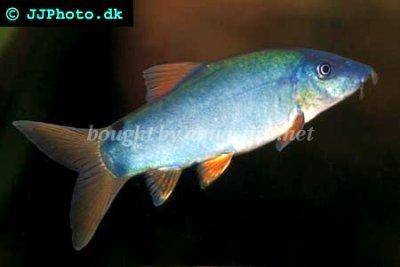



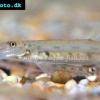 Horseface
Horseface 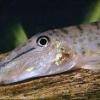 Horseface
Horseface 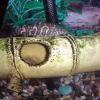 YoYo
YoYo 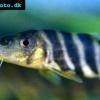 Bengal
Bengal 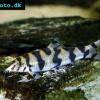 Burmese
Burmese  Myanmar
Myanmar 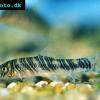 Zebra
Zebra 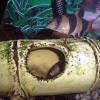 Clown
Clown  Dojo
Dojo 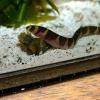 Kuhli
Kuhli  Loach
Loach 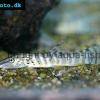 Tiger
Tiger 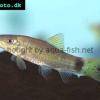 Tailspot
Tailspot